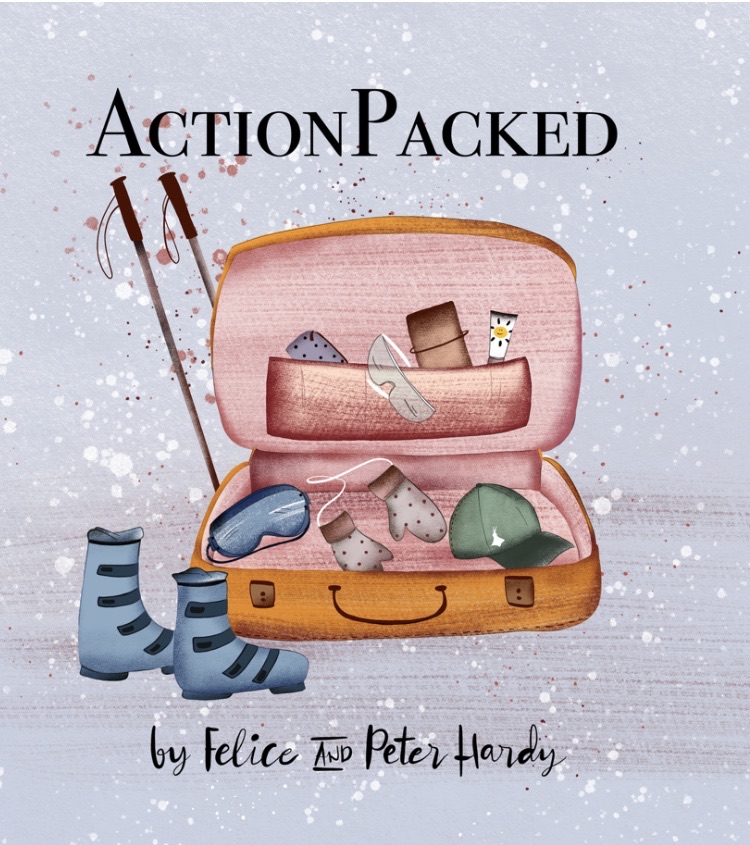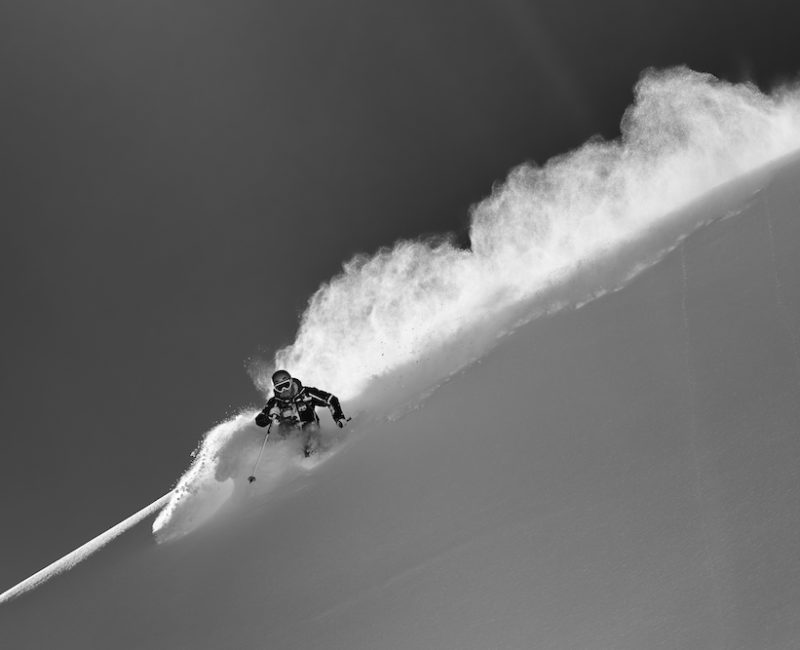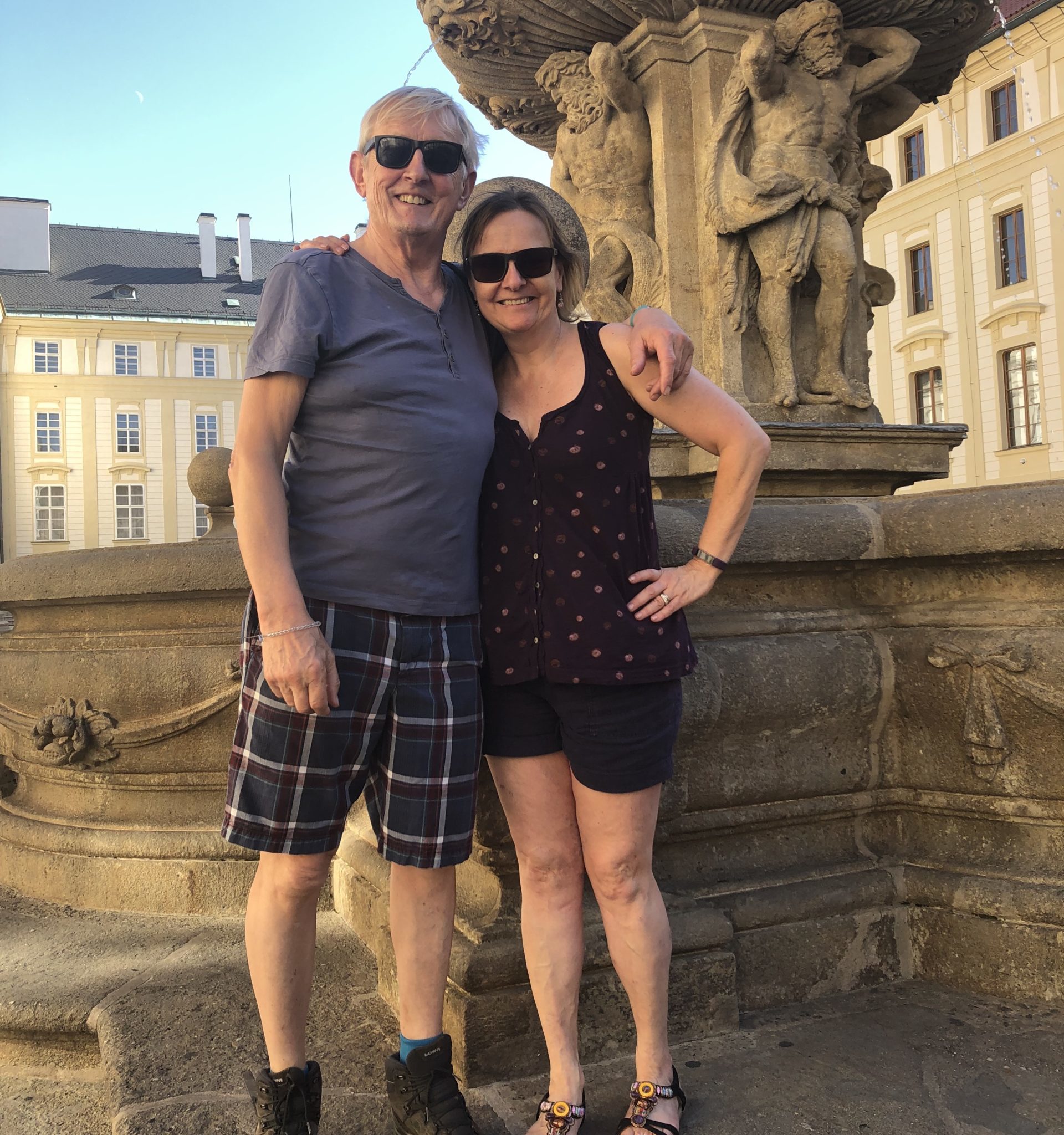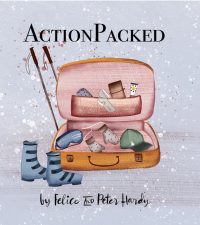
Konrad racing in St Anton 1979. Photo: © Colorsport / Stewart Fraser
Konrad Bartelski is a former British alpine ski racer who produced the best result by a Brit on the Alpine Skiing World Cup circuit in 1981 by coming within 0.11 seconds of winning a World Cup downhill race at Val Gardena. These days he’s a professional photographer with regular exhibitions of his work.
Peter This week we’re chatting to Konrad Bartelski, one of the golden greats of British skiing – his years as a racer and his highly professional midlife career as a passionate photographer. Welcome to our travel podcast, Konrad. Now, your life was supercharged in the space of 2 minutes 7.52 seconds on the morning of December the 13th, 1981. That was the time it took you to complete the World Cup downhill course at Val Gardena in Italy. You took second place behind Austria’s Erwin Resch causing a French TV commentator to splutter to his audience: ‘Ce n’est pas possible! It’s an Englishman!’ Incredibly, 39 years later, your performance that day remains the best result ever by a British alpine skier in a World Cup race. Although slalom specialist, Dave Riding, equalled it in Kitzbühel in 2017, but no one is yet beaten it. Do you remember the moment?
Konrad Well, it’s one I won’t forget, that’s for sure; an awful lot of work had gone into the years before to get there. And it was something that, as a youngster, I used to lie in bed dreaming of seeing that Union Jack raised on a podium. Unfortunately, it was only the second step, not the top step. I was always dreaming of the top step, but that was my fault anyway, because I made a mistake just in front of the finish line at Val Gardena, because I actually was leading the race until 100 meters from the finish when I mistimed the last jump, and I lost two tenths of a second. So instead of being a tenth of a second ahead I was a tenth of a second behind. So world’s fastest loser is what I became instead.
Peter Why do you think your record’s never been beaten? Thirty-nine years have slipped by, that’s a long time.
Konrad It’s because it’s a very competitive sport; Alpine racing is hugely competitive. There’s also huge sums of money invested by the alpine nations, so there’s an awful lot of people vying and the competition is tight. I really enjoyed watching Dave Riding in the last years skiing the way he skis, as I did enjoy watching Alain Baxter when he was skiing and when he legitimately won a bronze medal that was illegitimately taken away from him in 2002.
Felice When did you first put on a pair of skis?
Konrad My ski history started back in the war because my father escaped from Poland. He came over and he was a trainee pilot at the time, and they sent him out to Canada to be trained as a pilot. There on his days off he went to Banff and Lake Louise and that’s where he fell in love with the mountains. And I even have colour films, eight millimetre films, of his day trips to the Rockies. When he came back from the war and everything settled down and he had a family, when my brother was six and I was three, he said: ‘Right, I’m going to take it to take you out to Kitzbühel. We’ll go skiing together.’ So the three of us went skiing; that was my introduction to skiing.
Can’t say I did much distance in those first six days of skiing – I was too young to go to ski school, so my father was taking me up and down the slope. Gore-Tex and such had never been invented in those days, so I was getting pretty damp and mucky in the weather. I always said to my father: ‘Can I go to the loo, please?’ I’d then go into the loo in the hut, which is just at the bottom of the Kitzbühel downhill amazingly. I locked myself in, then at least I would have 20 minutes of warmth sitting on the loo, and my father was banging on the door: ‘Come on out!’

Rhythm. Photo: © Konrad Bartelski.
Felice When did you first take part in a ski race?
Konrad It was still a long time away from when I first started skiing. That holiday became our family holiday – in those days, my father had two weeks’ holiday. He would take one week off to work on air safety conferences with IFAPA, which is the International Federation of Airline Pilots Association, which eventually he became president of. The other week he would share with us as a family and we’d always go to Kitzbühel, basically just after New Year, the first quiet week after New Year, which was cheap and it was easy for us to fly to Munich, so I just learned to ski six days a year, really until I was 11.
And then I had a second ski trip. The first time I ever skied anywhere else other than Kitzbühel, we went to Aviemore for a week’s skiing. Being fiercely patriotic, I wanted to ski in my own country. But racing happened because in Kitzbühel – being there at the beginning of January – the whole drama was building up. You walk round the centre of the beautiful town, and in the banks you’ll see all the trophies, and the ski instructor would be talking about it, they’d started to put the wicker fencing on the side of the mountain and the preparation was happening…
Peter Preparation for the Hahnenkamm?
Konrad For the Hahnenkamm race. This was this big dramatic race that was before the World Cup was orchestrated. It was huge race and the stories even bigger than the race, I can assure you. The ski instructors would tell me: ‘This fellow came down and hit this tree and bounced off this cliff.’ So I was always being indoctrinated with the terror of this mountain, which probably played on my mind when I was racing downhill a few decades later on. But the ski instructors always say, well, you know, it’s great…the Austrians, the Swiss and the French. And I thought, well what about the British? Why can’t we compete?
And when I was about ten I persuaded my parents to let us stay a little bit longer so we could actually see the race. And I was standing beside the downhill and the Aga Khan was racing down that year for Great Britain. I’d watched all the racers coming down and an impressive spectacle it was, and then the Aga Khan came down about 10 or 15 seconds slower. And the ski instructor said: ‘After the show, you bring on the clowns.’ I just thought, OK, right, I’ve got a job to do. And that was really the deciding moment.
I was really enjoying my skiing from about the age of eight, inspired very much by a Warren Miller film we I went to see in Kitzbühel. I went to see this film and I just suddenly realised this is what I wanted to do. And I had a fantastic ski instructor called Gitti Schatz, who introduced me to the love of the mountains and the beauty of the mountains. And from that point on everything in my life really centred around skiing, I would say. And so the idea of ski racing was a challenge that I readily undertook.

Konrad in Hakuba, 2020.
Konrad So obviously, how did you then start ski racing? Well, when my brother was 16, 15, he had to do his ‘O’ levels and he couldn’t take time out of school. So my parents sent him with a Dutch ski club because my father was working in Holland at the time, and he went then to Neustift for the Dutch Junior Championships and he quite enjoyed that. And the following year he decided to send me and my brother – I would have been 12 then and he would be 15. So it was quite an exciting time for me. I had his hand-me-down ski boots – they were almost too big for me to tie up my laces. And in this giant slalom, I fell over at the last gate before the finish in my first race, which is fairly typical of me to get all the way down and blow it at the last corner.
And then the next day was even more disappointing because this was an under-18s race. I was 12 years old at the time and I came second, and it was my brother who’d beaten me. So I was really annoyed that my brother beat me in this race, and that was my introduction to it. Then that April, the British Junior Championships were being held in Scotland for the first time, and having skied in Scotland the year before, we were aware of it. So I tried to persuade my parents to send me, and my brother did well in his ‘O’ level results so they said: ‘Okay, he’s done well so we’ll send you off.’
And my grandfather drove us up from Leeds in his caravan – we had his green-painted caravan towed at the back that he had the bottom of the garden. And we drove up and parked the caravan at Glenmore Lodge, waxed the skis inside the caravan, lived inside the caravan and went down for fish and chips if we were lucky. We had a budget of £72 for the week between the three of us. We couldn’t afford the lift passes so we’d walk up and down the hill, which I absolutely hated.
Peter Nevertheless, despite being just 12 years old, you came 10th in the slalom and the nine lads ahead of you were all strapping 16- or 17-year-olds. So after that performance, you got a little bit of funding from the Kandahar Ski Club, and then in 1972, you raced at the Winter Olympics in Sapporo, Japan?
Konrad Yes, I was 17, that was then five years on from that point. I was trying to count out the number of days that I ski before I went to the Olympics and I reckon it was somewhere between 135 and 150 days I’d probably skied all my life – before I made it to Sapporo.
Peter That’s a very small number.
Konrad But when we got there, it was actually a wonderful trip for a 17-year-old, I was standing in Sapporo in this speed-skating rink outdoors, beautiful sunny day. And, you know, it’s quite an emotional moment for a 17-year-old boy with the millions of people watching on television, like I used to watch on television as a kid all the Olympics and the Winter Olympic Games. I noticed that our team was one of the biggest there. Over the next couple of weeks, I’d get down a course and the officials at the bottom said: ‘Congratulations. Well done. You finished.’
And I looked at them with a bit of a strange look: ‘Surely we’re here to be competing, aren’t we?’ Anyway, we didn’t win one medal out of that huge team, so that spurred me on. And I came back from Sapporo saying: ‘Okay, I will never go back to the Olympics unless I can try and be competitive.’
I went back and remember walking into school, having been away at Olympics, and I just walked straight into my class, sat down, and the teacher threw a book and said: ‘Right, got a bit of work to do’ – with no reference, no acknowledgement or anything. Imagine in this day and age of social media as it is…somebody goes to the Olympics? Absolutely nothing, just straight back to work and get on with it.

Paragon. Photo: © Konrad Bartelski.
Peter Konrad, after you retired from competitive skiing, you went on to have a highly successful career as a journalist, at one stage you also imported ski equipment from Austria into Britain, you worked in television, and then in recent years a whole new career opened up for you as a professional photographer. When did this passion for photography begin?
Konrad Well, my passion for photography began as a youngster because my father, as a said, took films during the war and so I had an interest in photography. He used to fly for KLM and so he would fly to Tokyo Japan, and he would come back with these brochures on cameras and such.
I remember working, painting the house, mowing the lawn to buy my first SLR camera when I was I think 14, 15 years old, I was always interested in photography. And when I was ski racing, I’d always take cameras with me and we were privileged to go to Argentina and New Zealand and various countries for training. And I used to take photographs of these beautiful countries I was visiting, so that’s how the passion evolved, and I would sell some of the pictures and write articles for one of the Austrian ski magazines because that would help pay for the training that I was doing.
Then when I retired from skiing and got involved in having a house, a mortgage and a family, then the photography waned a little bit. And then when digital cameras, the small ones, started to come out and they weren’t too expensive I remember buying one and that’s really what got me back into it.
I was skiing with Graham Austick one year in St Anton and taking some nice pictures of him with his very small Minolta Dimage X1 – probably a quarter of a megabyte or something. It was minute, but it just meant that you could get things and do things. Graham was building a lodge up in Norway, right on the top of Norway on the side of a fjord, and that just caught my imagination; I thought it would be great to go ski up there one time. And so when the lodge was finished, I got a group together, went skiing there and I got – not a huge camera, but a better camera – and took some pictures and that’s where really it all started – up in Lyngen Lodge.
Peter Black and white, mainly black and white?
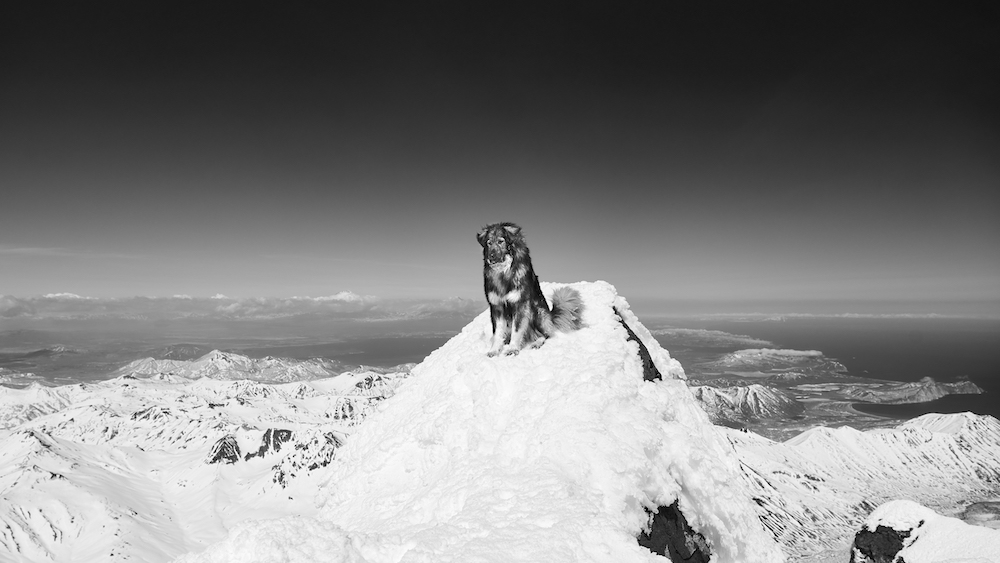
Igor. Photo: © Konrad Bartelski.
Konrad Well, my exhibitions that are predominately black and white, I would say 95% black and white. I suppose the best lesson was, I was in Iceland for a week and it was a most remarkable week. I was with a good friend, John Faulkner, and some other friends of mine, Marco Shapiro, was there. Most people know Iceland is a photographer’s dream, and we had wonderful weather, wonderful snow and everything was absolutely perfect. And I got back and..yes the pictures were nice but they somehow just didn’t really capture my emotions, as I’d felt when I was out there.
After about three weeks, I was fiddling around on my computer doing some processing, and I started processing the Icelandic work in black and white, and suddenly I realised the value of taking out the colour from the photograph because often it’s distracting. Blue skies are the most boring thing out in many ways, clouds are my best friend. And when you take away the colours, a lot of the time you actually increase the emotion and the passion and the detail and the memories of what you see. So, yes, black and white is where I’ll always lean to because again, photography is 40% taking the picture, 40% of it is processing and printing it, 10% is how you mount it and frame it, 10% is how you light it.

Rob horse. Photo: © Konrad Bartelski.
And the printing process in black and white is what’s really fascinating, because you start to see things that you never see on a digital screen. You see a texture and a richness and a depth that you’d never see otherwise. It’s what inspired Ansel Adams and sports photographers like Chris Smith, who was a great hero of mine when I was young. And you see then really what’s special. It’s not what you see on Instagram, it’s not what you see on a computer, it’s what you see printed out on a fine art printed paper.
Peter Last year you wrote: ‘We should never forget that we have inherited the great privilege to breath and stand on this earth. When at the top of a mountain where the oxygen is at its purest, I’m filled with a phenomenal clarity, an outstanding passion and a real sense of purpose.’ So are mountains essentially your main or your only inspiration?

Water Colours. Photo: © Konrad Bartelski.
Konrad They’re my main inspiration…but we’re having this conversation when something’s happened I never, ever thought would happen. Ever. I mean, it’s totally unbelievable. The mountains have actually been locked down and switched off and cut off to human beings. It’s illegal to be in the mountains in France, Austria, Switzerland, Italy especially. Could you ever believe something like that would happen? But that’s where I get my passion, yes. Having said that, the passions come from the eyes and something that…I’ve been really evolving a philosophy – probably this winter – is how narrow-visioned most of us are.
Hopefully this hibernation time that we’re all being forced to endure will allow us to look around ourselves a lot more – because most people really don’t have any peripheral vision. They’re really just so concentrated in looking ahead…more this more that, you know, we’ve got to do this, we’ve got to do that. Our eyes are great for going left to right, moving around and seeing what’s around us, behind us, and being more socially and visually aware of what’s around us. Why do so many accidents happen on the slopes? Because people are looking straight forwards, thinking about speed, thinking about what they’re about. They’re not actually encompassing everything that’s around them. They’re not looking at the scenery, they’re not enjoying the space around them, they’re not evolving.
So, yes, breathing in that fresh air and using your peripheral vision is something that is very easy to do when you’re top of the mountain. It’s something that you can do anywhere. You can do it if you’re walking the back streets of Jaipur, it is something you can do if you’re walking on a beach in the Camargue, if you’re on the nature reserve along the Camargue, you can do it anywhere. That’s what we need to get back to doing, and hopefully the benefit of this reset that we’re all having in our lives now will enable it.

Monument. Photo: © Konrad Bartelski.
Felice I agree. You’ve been on expeditions to all seven continents. Do you have a favourite destination?
Konrad Yes, The Planet Earth is my favourite destination, and we have to look after it that’s for sure. So I suppose there are two places that really stand out for me. One is Argentina. I was training there in the mid-70s and it was always – of all the places I’d been in the world at that point – it was the one that I really wanted to go back to. I went back there four years ago and the Andes there are pretty special. I mean, the Andes are just huge, enormous, wonderful, and the vivaciousness of the Argentinean people is pretty special.
And another place I return to actually quite frequently is Japan. And Japan is…again…the manners, the culture there is extraordinary. And it’s all based on nature, their art, their religion, the architecture, their way of life, all stems back down to nature. And they have this wonderful respect for nature, and I think that’s something that every culture outside of Japan could take an awful lot of fruit from, because without nature, we are nothing.
Peter You went, I think, in 2018 to King George Island in Antarctica. That was heli-skiing there?
Konrad Yes, we went heli-skiing there in Antarctica. It was the first time it’s ever been done and my heli-skiing amounted to a run of about six minutes. The helicopter had difficulty landing on top of the mountain because some winds picked up. We just had to get down to the bottom again and fly back to base, because there’s no margin for error there. And so I was curious about the idea of flying around in Antarctica in a helicopter, the impact on the environment, and a lot of people said to me, ‘Why are you doing that? Why are you going down there?’ And the reason I went down was simply because I wanted to photograph from the air.
I had very limited time to do what I wanted to do from that perspective – from a photographic point of view, it wasn’t a huge result. But because of various issues we had with the whole itinerary, there were lots of problems, everything went wrong. I did get to see an awful lot and it’s staggering.

Aerodynamicist. Photo: © Konrad Bartelski.
We were staying at this Russian camp and there’s a diesel generator going there 24/7. Chug, chug, chug, chug, chug…black smoke zooming in the air. We went to look at some elephant seals and it was quite a long hike and it was horizontal rain, it was very cold and wet, and I asked our guide: ‘Is it all right to go the toilet?’
He said: ‘Please do it in a bottle if you do.’ Alright, I can understand them being that particular about leaving waste, but then we were walking past the airport – or the gravel landing strip to the base camp – and there’s this generator going chug, chug, chug, pouring all this pollution into the air. So I was aware it’s also very good that people get to see the truth, because the truth is not something that’s released too often to the general public. Unless people are able to get to see the truth they can’t tell people what the truth is. Certainly the people living down there never admit the fact they’ve got a diesel generator providing all the electricity.
Felice You don’t just photograph skiing and ski-touring, things like that, do you? We’ve seen images of other sports and other travel like India, and fashion. Quite a mixture of things.
Konrad Yeah, I mean we all have a camera with us now every day of our lives pretty well. Nearly everyone has. Because the pictures and images you can record on your iPhones or your telephones is quite extraordinary. At my last exhibition, I had a large print that was taken with my iPhone. And so the quality which you get is quite remarkable. And so even when I am out hiking in the evenings with this lockdown we have at the moment, I still have a camera with me and there are still images I capture of something I see that is special.
I do some work at the National Music Theatre. I love working with young kids, when they’re doing their dress rehearsals, because nothing is staged or organised. And then you’re working in very dark conditions, which technically is very challenging and the light is hugely traumatic. And so that’s one of my favourite different locations I like working in.
I do some occasional fashion shoots. Having a daughter who’s in the fashion industry, her business Neve & Noor, she’s quite happy for me to come and help her do her fashion shoots for her work. That’s something, again, that I do enjoy. It’s a different set-up and there are different requirements. You have to have a consistency in your work with what you’re doing there, because you might be taking 1,500 pictures in a day. Then you have to sort that down to 30 or 40. You have to have a consistency so the brochures look interesting but not full of shadows, not overly dramatic. You have to work within certain constraints.
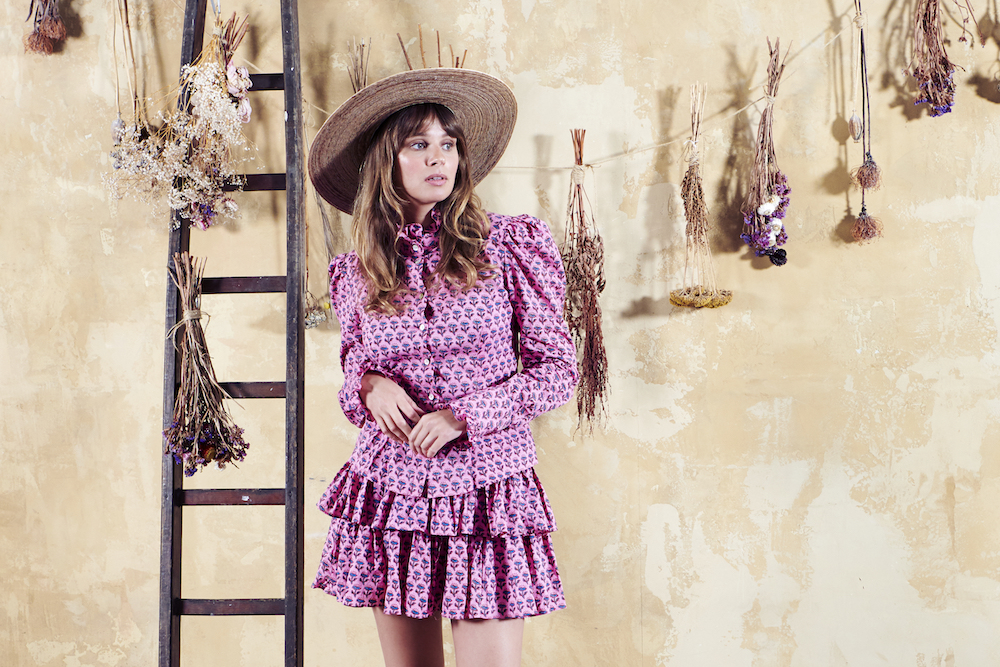
Neve & Noor fashion shoot. Photo: © Konrad Bartelski.
I love ballet. I did my first ballet and I always wanted to do it. It’s very difficult to get into the ballet, it’s quite a closed shop environment to take photographs in – fortunately I knew somebody who could open the door for me and that is something I really enjoy.
So I enjoy capturing the moments. What I don’t really like to do is set up and stage too much. I like to capture the moments and emotions of people, and it’s the surprise at things. You have a look at some photographs and…wow… it’s incredible. There are pictures of the Milky Way, there’s probably about 30, 40 photographs going into that, and that to me is a digital reconstruction rather than actually capturing what we see. You’re actually creating an untruth out of a truth. But what I like to do is to show the truth of what I see.
Felice Where can people see and buy your work?
Konrad Well, I have a website which is very simple, it’s Konradbartelski.photography – there’s two sections to it. There is my exhibition work, which is limited edition prints which are hand-curated and hand-printed up to order. And then if people are interested – these are large print because the mountains are large and my work is large – my ideal size, I like working in, is 6x4ft sized prints. And there’s a challenge to work technically that size. But the beauty is that you see things that you will never see in something small. And it does capture what mountains are about, which are large size space. But obviously there’s limitations to how many people can put a 6x4ft print up with a frame in their rooms. Certainly wouldn’t fit in most people’s loos where a lot of people’s pictures hang these days.
So the limited edition prints – if there’s an interest in those, then you can email me on that and I can tell people that the options. Then I have all my other work, there is the ski-touring, a serious of stock shots – they’re all colour. You can order those directly either as prints or as files, and those can be downloaded directly from the website.
Peter Do you have any exhibitions coming up?
Konrad Yes, I’m planning my next exhibition, which will be at Wimbledon Fine Art which is in Church Road in Wimbledon. It’ll be in November sometime. The date is still to be decided, obviously there’s an awful lot of things up in the air, and I just hope that we’ll have some sense of normality around that time of year. Looking forward to having further exhibitions of my work then.
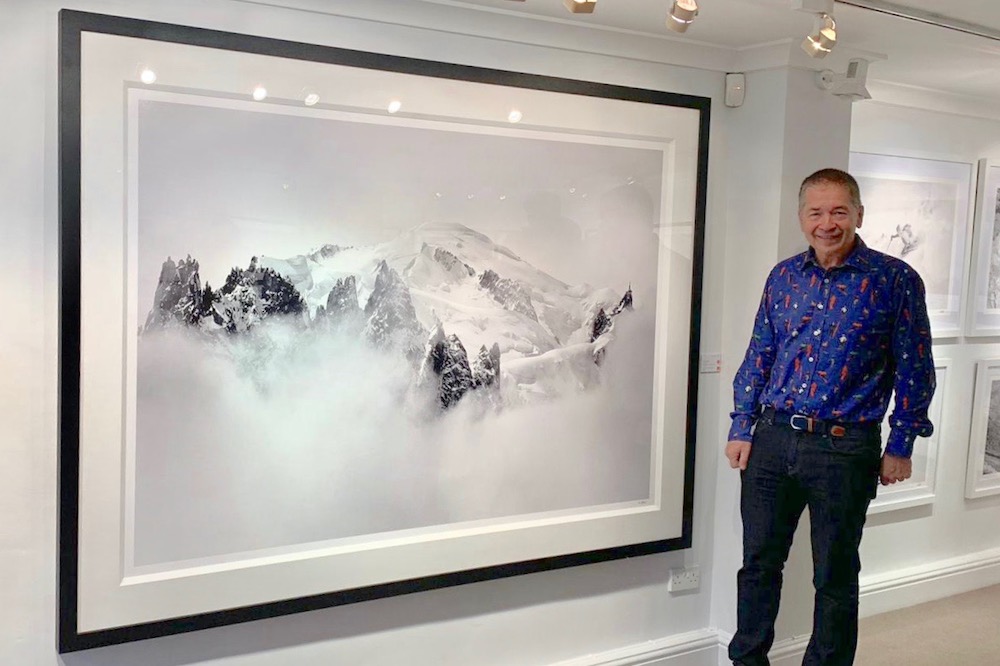
The Crown (Mr Blanc) with Konrad.
Peter Do you think we have a ski season coming up for 2021?
Konrad I’m pretty sure there will be a ski season next year. I’m sure there’ll be some limitations on what people can do and how they might go about things. It might be that you’ll have to have a Corona test before you’re allowed to travel or something like that. There will be some very nervous areas. I mean, the Italians have been decimated by it, the Austrians, the Swiss – all the travel people are really going to be struggling. It’s such a knock in the teeth for them. However, humans are incredibly resilient and people bounce back. And I think one thing that people really do need after being hibernated like this is the mountains, now more than ever.
Peter Konrad, thank you very much for coming on the show. And we wish you the very best for your exhibition coming up. Details will be on your website. Hopefully you and all of us will have a near-normal and great ski season from this December.
Konrad. Thank you Peter and Felice. Very nice to speak to you.

Exhibition in Wimbledon. Photo: © Konrad Bartelski.
Felice That’s all for now. If you’ve enjoyed the show, please share this episode with at least one other person! Do also subscribe on Spotify, i-Tunes, Stitcher, or any of the many podcast providers – where you can give us a rating. You can also find us on Twitter, Facebook and Instagram. Stay safe and we’ll see you next week.
Also see our post and podcast The Man Who Has Skied More Resorts Than Anyone Else. For more information on skiing worldwide, visit Welove2ski.
© Action Packed Travel
BUY OUR MERCHANDISE
We’re now selling Action Packed Travel T-shirts in 5 different colours, all sizes, with our logo on the front. Find out more by clicking this link: Bonfire.com
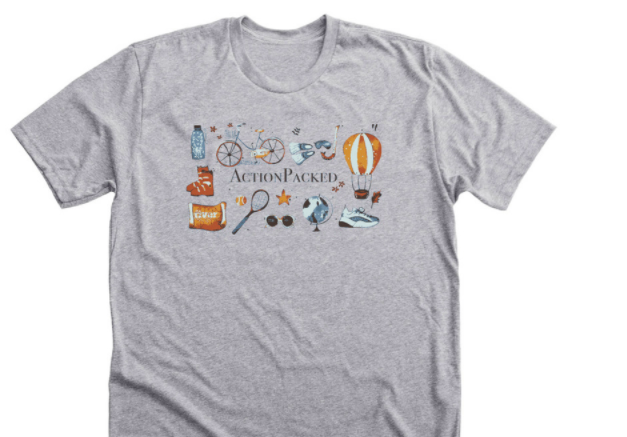

- Join over a hundred thousand podcasters already using Buzzsprout to get their message out to the world.
- Following the link lets Buzzsprout know we sent you, gets you a $20 Amazon gift card if you sign up for a paid plan, and helps support our show.
